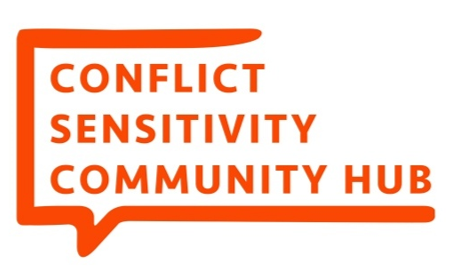What is Conflict Sensitivity?
“A conflict sensitive approach involves gaining a sound understanding of the two-way interaction between activities and context and acting to minimise negative impacts and maximise positive impacts of intervention on conflict, within an organisation’s given priorities/objectives (mandate).”
The concept of Conflict Sensitivity does not have one agreed definition; different actors adopt definitions tailored for the work they do and the context under which they operate. The Conflict Sensitivity Community Hub (CSC-Hub) understands conflict sensitivity as defined by the Consortium that preceded the Hub.
Reaching a consensus on the notion of conflict sensitivity proved to be a challenging and crucial task for the Consortium. To counter this challenge, the working definition for a conflict sensitive approach (CSA), quoted above, was adopted.
This definition can be contextualised and is meant to serve as a guiding definition which can be adapted to a variety of circumstances. Therefore, it can be applied:
- to all contexts, regardless of the severity or frequency of violence, even in situations where underlying tensions have not recently resulted in violence;
- across and throughout all areas of our work and should be applied as an institutional approach (beyond tools);
- to all types of work, to encompass humanitarian, development and peacebuilding, also including, where appropriate, work conducted by local civil society, government or private sector partners; and
- it does not require changing mandates/priorities/objectives as it does not entail an explicit commitment to peacebuilding as a priority – it can be mainstreamed across any priority/mandate.
It is also noted that the enhanced understanding of conflict that stems from conflict sensitivity may lead some agencies to explicitly adopt peacebuilding priorities or activities. This may be considered a peacebuilding side-effect of adopting a conflict sensitive approach.
This website contains several resources that can help you, your organisation and partners develop your competencies on conflict sensitive approach. To access them, check out our Resources.
>> Do no Harm
The first concept that is usually explained in Conflict Sensitivity is ‘Do No Harm’, considered the minimum standard of practice to avoid causing inadvertent harm. Conflict Sensitivity therefore goes beyond ‘Do No Harm’, as it provides actors the necessary framework and tools to:
- Understand the context in which it is operating
- Understand the interaction between the intervention and the context, and
- Act upon that understanding, in order to avoid negative impacts and maximize positive impacts on the conflict.
Developed by humanitarians, ‘Do No Harm’ principles state that aid is not neutral. Aid – and how it is administered – can cause harm or can strengthen capacities for peace in the midst of conflict-affected communities. All aid programmes involve the transfer of resources (food, shelter, water, health care, training, etc.) into a resource-scarce environment. Where people are in conflict, these resources represent power and wealth, and they become an element of the conflict.
Some people attempt to control and use aid resources to support their side of the conflict and/or to weaken the other side. If they are successful or if aid staff fails to recognise the impact of their programming decisions, aid can cause harm. However, the transfer of resources and the manner in which staff conduct the programmes can strengthen local capacities for peace, build on connectors that bring communities together, and reduce the divisions and sources of tensions that can lead to destructive conflict.
The ‘Do No Harm’ methodology is widely used among international and increasingly local humanitarian and development organisations. In Germany, for example, a large group of NGOs has committed themselves to mainstreaming ‘Do No Harm’ within their operations. While engaged in the early development of the tool in collaboration with CDA, World Vision has also moved toward a process of mainstreaming the use of the Do No Harm framework since 2001. To this end, workshops, training of trainers, programme assessments and case studies of the use of the above framework have been undertaken worldwide.
To lean more About ‘Do No Harm’, read DO NO HARM: A BRIEF INTRODUCTION FROM CDA.
